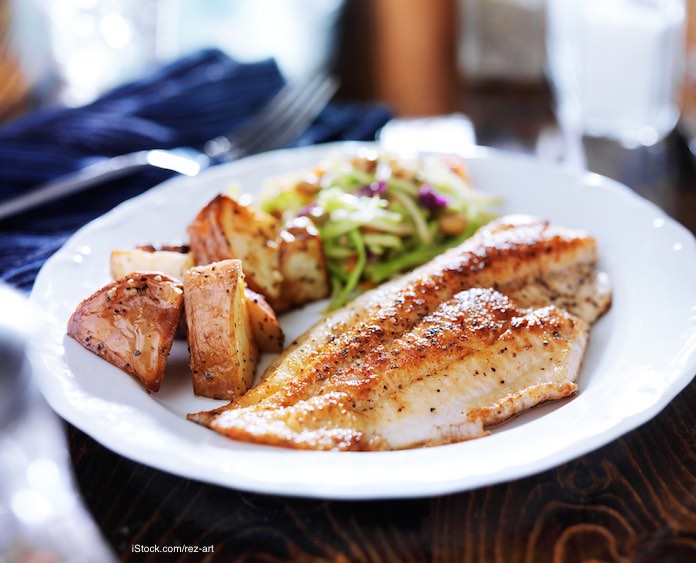The FDA and EPA have issued advice about eating fish, geared toward pregnant women, women of child-bearing age, breastfeeding mothers, and parents of young children. The issue regarding fish consumption is mercury content.

A reference chart sorts 62 types of fish into three categories: “Best choices” you can eat two to three times a week; “good choices” that you can eat once a week, and “fish to avoid.” Fish in the “best choices” category include almost 90% of the fish eaten in this country.
FDA conducted an analysis of fish consumption data and found that 50% of pregnant women surveyed ate less than 2 ounces a week. That is much less than the recommended amount. The nutritional benefits of eating fish are important for growth and development during pregnancy and early childhood.
One serving of fish is about 4 ounces, so that means everyone, especially those in the target group ,should eat 8 to 12 ounces per week. But since all fish contain traces of mercury, which can damage the brain and nervous system, government officials have put a limit on the amount you should eat. This new advice is consistent with the 2015-2020 Dietary Guidelines for Americans.
While the serving size for adults is 4 ounces, which is measured before cooking, the recommended serving size for children is smaller. Children should eat fish once or twice a week. And choose a variety of fish types.
Dr. Stephen Ostroff, FDA Deputy Commissioner for Foods and Veterinary Medicine, said in a statement, “Fish are an important source of protein and other nutrients for young children and women who are or may become pregnant, or are breastfeeding. This advice clearly shows the great diversity of fish in the U.S. market that they can consume safely. This new, clear and concrete advice is an excellent tool for making safe and healthy choices when buying fish.”
According to the chart, the fish that are lower in mercury include shrimp, pollock, salmon, canned light tuna, haddock, crab, flounder, sole, shad, herring, tilapia, catfish and cod along with 23 others. The fish that are labeled “good choices” include bluefish, grouper, halibut, mani mani, monkfish, rockfish, tilefish, and striped bass, among others. The fish to avoid include King mackerel, marling, orange roughy, shark, swordfish, tilefish from the Gulf of Mexico, and bigeye tuna.
If you fish to eat, check for local advisories where you fish and plan your fish consumption based on local and state advisories. If there is no information, eat just one fish meal a week from local waters. Clean and trim the fish of fat and skin, since locally-caught fish may contain contaminants besides mercury that can be reduced by trimming and cooking.




